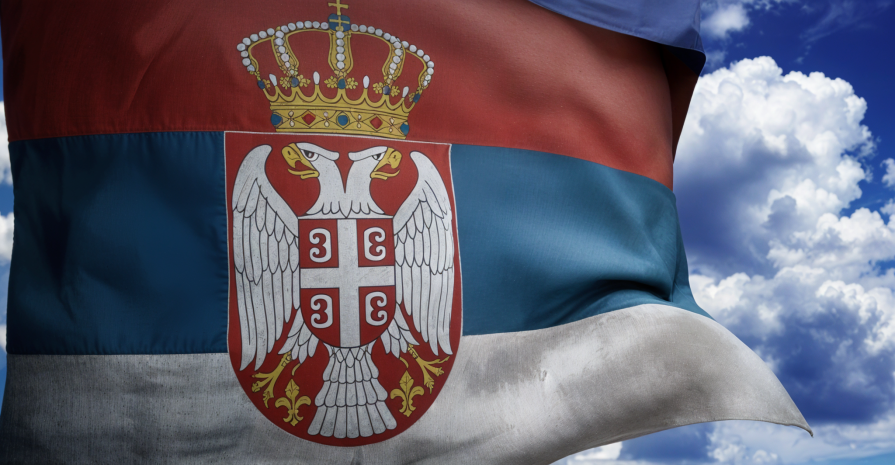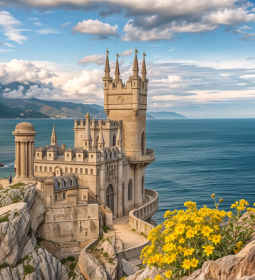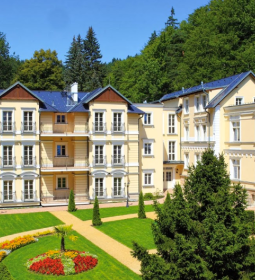The modern Serbian flag is a rectangular cloth with three stripes of red, blue and white pan-Slavist colors from top to bottom, on which the state emblem is superimposed.
This is not only the state, but also the national flag of the Serbs of the diaspora, as well as the symbol of the Orthodox Church of the largest of the Yugoslavic states.
Middle Ages
The first historical evidence of the presence of the Flag of the Serbs dates back to the end of the XIII century. Thus, in the annals of the Republic of Dubrovnik, the flag of the voivode of the prince and the great zhupan Stefan Vladislav was described. An unknown author notices that it used red and blue colors, although the location is unknown.
Most historians and politicians agree that we are talking about two horizontal stripes. It is known that the symbol of the great zhupan was by that time established and familiar, did not cause surprise, therefore, was much older than its description. However, historians are also convinced that the country did not have a single state banner, like the French oriflamma, and numerous noble people used each of their own coats of arms and symbols.
The most commonly used motif was crosses, for example, white or gold on red. Also popular was blue, yellow and even green – even without the Islamic connotation.

The next stage of national vexillology was a version of Stefan Dušan, anointed in 1346 by the king of the Serbs and the Greek – a green background with a golden rim. Seven years earlier, the Italian scientist Angelino Dulcerto presented the sovereign with a silver flag, on which a red double-headed eagle was pinned. The geographer used the same picture on his map as the national flag for this possession. Dusan had another flag – a yellow-red triangle: it is kept as a relic in the Hilandar monastery in Greece.
Soon the Serbian state perished under the onslaught of the young Ottoman Empire, and the question of national symbols for a long time went into oblivion.
Historical facts
Everything changed at the beginning of the XIX century with the uprising that broke out in the country against the power of the gentrefles. The rebels used various badges and flags - from white-blue-red tricolor with three crosses to yellow-red and other two-tone flags, whose role was reduced mainly to isolation from the Turks and opposition to them.
The uprising choked in blood, but a couple of years later broke out again - in 1815. The symbol was one – a white canvas with a red cross. The rebels managed to achieve the creation of a vassal, but their own state. The leader of independent Serbia, however, did not use the cross, preferring the red-blue-white banner.
Under the legend that this is an inverted Russian flag, there are no foundations. But it is known that the Turks did not like the flag: the sultan was furious and Milos Obrenovic had to bribe the padishah for a ringing coin. Gold opened the way, and the banner acquired its current appearance (although blue was blue at first).
According to the constitution of 1835, which at that time was dissatisfied with all European monarchs, the flag was described as a canvas with a red, white and bluish-steel stripe.

The firman of the ruler of the Ottoman Empire approved the regulation on the coat of arms, and also allowed the use of new symbols for river navigation on the Danube. True, the Turks could not help but guess, and first in the field of the flag on the red stripe were placed three white crescents. Three years later, they were replaced by white and later gold stars.
The Legend of the Coup
At different times, there were two popular legends about how the flag was born.
- According to the first, it came from the state colors of revolutionary France.
- The second argues that for special merits in the liberation of the Serbian people from the tyranny of the Turks and the recognition of the independence of the state, the king simply borrowed the symbols from the Russians, turning it 180 degrees.
Historians, again, are skeptical of both versions. Three colors accompanied the Kingdom of Serbia until 1918, when it was part of the united monarchy of Serbs, Croats and Slovenes.
War and politics
The same symbol was used by the collaborative government of Milan Nedić, and the authorities in exile in London, and the people's liberation army of the partisans of Josip Broz Tito - however, the latter added a five-pointed star to the white stripe. And so it happened. Each of the six Yugoslavic autonomies also used a star, but with variations. The largest republic got a red with a gold edge.
After the collapse in 1990, a referendum was held, but the authorities ignored its result and removed the star. The current variation was approved by a 2009 law. By the way, during the collapse of the tricolor of Yugoslavic flowers, not only Belgrade Serbs used. It was a symbol of a number of self-proclaimed states, such as the Republic of Dubrovnik under the leadership of Aco Apolonio, the Republika Srpska in Bosnia and Herzegovina (under radovan Karadzic) and Krajina (in the south-east of present-day Croatia). All these entities were destroyed by croats during the civil war in Bosnia in 1994-1996.











